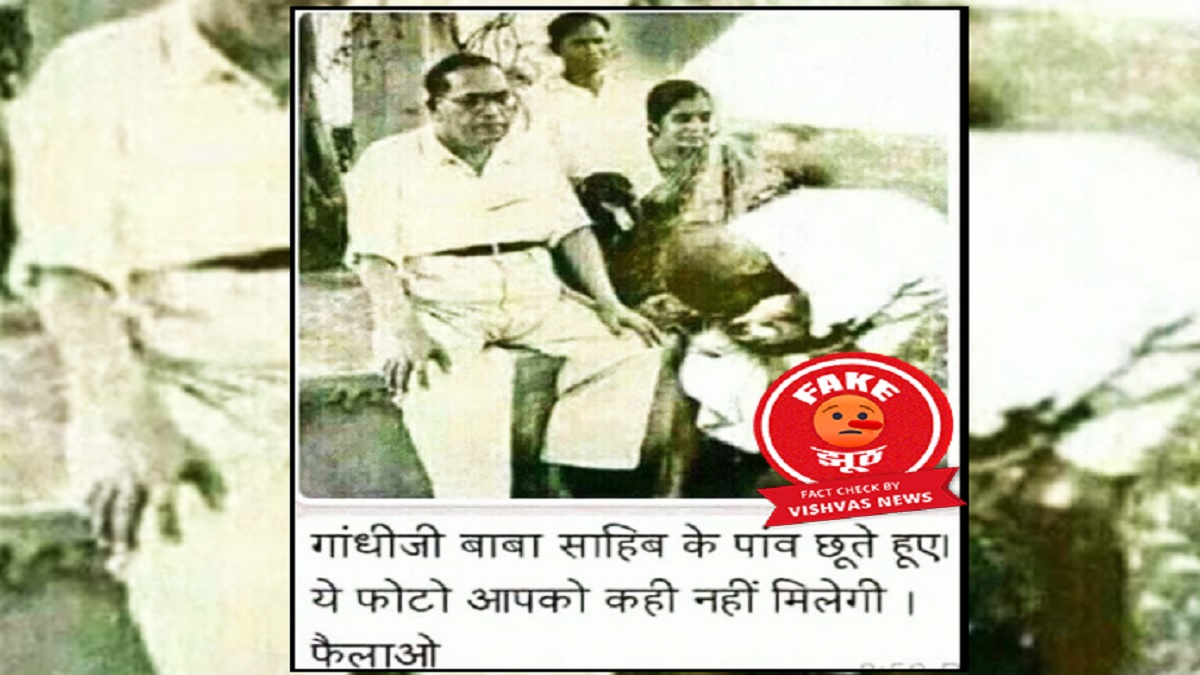A viral image circulating on social media depicts Mahatma Gandhi bowing to Dr. B.R. Ambedkar. Many users are sharing this picture, believing it to be authentic. However, a fact-check by Vishvas News revealed that this picture is a misleading fabrication. The image was created by merging two separate photographs, presenting a false narrative of respect and reverence between the two prominent figures.
The Truth Behind the Viral Image
A close examination of the image revealed the manipulation. When the image was divided into sections, the cropped image of Dr. Ambedkar and his wife was traced to a gallery dedicated to Dr. Ambedkar. This original image, however, does not feature Mahatma Gandhi. Further investigation using Google Lens led to the original image of Mahatma Gandhi, sourced from Weebly.com. In the original image, Mahatma Gandhi is shown touching the ground, not bowing to anyone’s feet.
Analyzing the Image
This discrepancy points to the manipulation involved. The image circulating online is not an authentic representation of an interaction between Gandhi and Ambedkar. The creators of this fabricated image have deliberately combined separate photographs, exploiting people’s reverence for these leaders to spread a misleading narrative.
The Importance of Fact-Checking
This instance highlights the significance of fact-checking and critical evaluation of information shared online. Social media platforms are often fertile ground for the spread of misinformation and disinformation. Images are particularly susceptible to manipulation, making them powerful tools for spreading misleading information. The easy accessibility of image editing software further fuels the ease with which such fabricated content can be created and shared.
The Danger of Misinformation
Disseminating manipulated images like the one in question can lead to several detrimental consequences.
- Distortion of History: Fabricated images contribute to a distorted understanding of historical events and relationships between historical figures.
- Fueling Division: Such misinformation can exacerbate social and political tensions by misrepresenting the actions and views of individuals, fueling divisions and prejudice.
- Erosion of Trust: The spread of misinformation erodes public trust in credible sources and institutions responsible for verifying information.
Combating Misinformation
It is crucial to remain vigilant and adopt measures to counter the spread of misinformation.
Critical Evaluation:
- Source Verification: Check the source of information before sharing it. Is it a reputable source known for accuracy?
- Reverse Image Search: Utilize tools like Google Lens or TinEye to conduct a reverse image search and identify the original source and context of the image.
- Fact-Checking Websites: Consult established fact-checking websites like Vishvas News for verification of images and information.
Responsible Sharing:
- Verify Before Sharing: Don’t share information without verifying its authenticity.
- Promote Fact-Checking: Encourage critical thinking and fact-checking within your networks.
- Report Misinformation: Report fabricated content and accounts spreading misleading information to social media platforms.
Take Away Points
The viral image of Mahatma Gandhi bowing to Dr. B.R. Ambedkar is a fabricated image that has been created by merging two separate photographs. It is crucial to critically evaluate information shared online, especially images, to avoid falling prey to misleading narratives. By embracing responsible information consumption and promoting fact-checking practices, we can contribute to combatting the spread of misinformation and ensuring accurate historical narratives.




